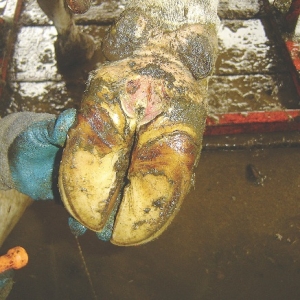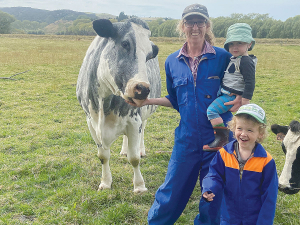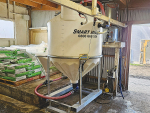Bovine digital dermatitis (BDD) was identified in New Zealand in a single case in 2004. Another case was reported in 2006, then five suspect cases in 2011.
New Zealand hoofcare expert Neil Chesterton says farmers should wake up to the threat of BDD. “We need to get farmers checking for the disease. If they see anything like BDD on the hoof they need to ask their vet to take a sample and, if the result is positive, the vet will then check out the rest of the herd.”
The BDD lesion is found at the back of the foot, in the middle just above the bulbs of the heels.
It starts off looking like a strawberry and is extremely painful.
It is caused by bacteria, and when first introduced into a herd, tends to spread in an epidemic pattern as experienced in most countries.
“I spoke with one foot-trimmer in Australia who had heifers come back from grazing with BDD which then spread through 70% of his herd,” says Chesterton.
As the infection becomes more established a high proportion of chronic lesions can be seen. The lameness becomes less severe, but weight-bearing may be shifted to the toes. Clinical studies in 2000 and 2003 have reported that, if left untreated, BDD will eventually lead to secondary weight loss, loss of fertility and decreased milk production in affected herds.
While BDD was originally thought to only effect housed herds, current experience and evidence is proving otherwise. Any dirty environment is a potential breeding ground and high risk area for the disease. “Even now people are surprised to discover BDD in outdoor herds,” says Chesterton.
Chesterton belongs to a newly formed BDD group helping to raise awareness of this problem.
“Footbaths are the best way to prevent and control the spread of BDD,” Chesterton says. “All new sheds should have footbaths, and existing sheds should look into installing one.
“ I’ve recently worked with a farmer who put one in himself for about $200.”
www.lamecow.co.nz















